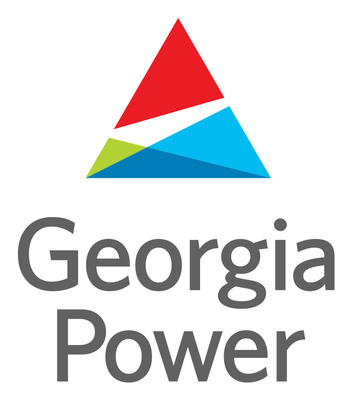Use of “drones” to inspect transmission lines part of company’s commitment to reliability for customers
Demo B-roll link included within
ATLANTA, Aug. 15, 2024 /PRNewswire/ — Georgia Power continues to focus on improving reliability and service for customers by making investments in the power grid and using advanced technology to prevent or restore power outages. The company is now deploying unmanned aerial systems, or drones, to inspect transmission power lines, helping ensure the safety and reliability of these main lines more efficiently and with greater accuracy than ever before. This innovative approach not only enhances operational efficiency, reducing the amount of time to inspect transmission lines by 40% on average, but also delivers substantial cost savings of 60% versus traditional methods.
“Georgia Power owns and operates almost 12,000 miles of transmission lines throughout the state, which provide power to millions of homes and businesses – inspecting and maintaining these lines is a crucial part of what we do every day,” said Fran Forehand, senior vice president of Transmission for Georgia Power. “We are always looking to improve grid resiliency and operational efficiencies, which is why we implemented transmission line drone inspections to improve efficiency and safety for our teams, provide better data and reduce costs for our customers.”
Historically, Georgia Power has used specialized bucket trucks and helicopter flights to reach and inspect transmission lines which are, on average, 80 to 100 miles long and 100 feet tall, with some reaching as high as 350 feet. By using drones, the company is saving significant fuel, maintenance and labor costs and, on average, drone pilots can inspect 14 miles of transmission lines per day. Georgia Power plans to review more than 15,000 structures in transmission corridors this year alone.
Georgia Power drone pilots work safely, quietly and swiftly within transmission corridors, capturing images of transmission lines and equipment. The inspection method is an even safer way to assess these high-voltage lines, while gathering high-quality, detailed photos and videos. The images are so precise they allow line inspectors to zoom in on equipment and catch any irregularities before they can become a problem.
Transmission structures are engineered to withstand harsh environmental conditions, but damage does occur from sources such as lightning strikes, which is actually the primary cause of damage to transmission lines. Drone pilots inspect for damage and also ensure the connections on structures are intact, which minimizes the impact of lightning strikes on transmission equipment. Other anomalies on the inspection list for main power lines include damage from vegetation and debris, erosion from the elements, and bird excrement, which can be highly acidic.
All drone assessments are completed by licensed drone pilots and comply with all Federal Aviation Administration (FAA) rules and regulations. Drone pilots are often lineworkers who have received specialized training.
“As a former lineworker who has spent countless hours in bucket trucks inspecting transmission lines, the use of drones is a gamechanger,” said Nick Howell, a certified drone operator for Georgia Power. “I’m glad our company has made the investment in the technology, and in our people. Not only am I able to safely inspect transmission lines from the ground, but I’m able to better collect accurate data, share it with my team that may be miles away in some case, and ultimately get repairs done more quickly and efficiently than ever before.”
In addition to utilizing advanced technology such as drones, Georgia Power’s efforts to improve reliability and add grid resiliency in recent years includes rebuilding transmission lines and dozens of substations across Georgia for safe and reliable power delivery to neighborhoods; installing smart technology, which lessens the number of power outages and in some cases avoids outages altogether; upgrading or relocating hundreds of miles of power lines underground, where it made the most impact; and improving tens of thousands of power poles.
For more information on Georgia Power’s reliability work, please visit GeorgiaPower.com/Reliability.
Editor’s note:
Media can download b-roll of Georgia Power transmission line drone inspections and a company regional executive who explains this work: https://bcove.video/3S6hLyu
About Georgia Power
Georgia Power is the largest electric subsidiary of Southern Company (NYSE: SO), America’s premier energy company. Value, Reliability, Customer Service and Stewardship are the cornerstones of the company’s promise to 2.7 million customers in all but four of Georgia’s 159 counties. Committed to delivering clean, safe, reliable and affordable energy, Georgia Power maintains a diverse, innovative generation mix that includes nuclear, coal and natural gas, as well as renewables such as solar, hydroelectric and wind. Georgia Power focuses on delivering world-class service to its customers every day and the company is recognized by J.D. Power as an industry leader in customer satisfaction. For more information, visit www.GeorgiaPower.com and connect with the company on Facebook (Facebook.com/GeorgiaPower), X (Twitter.com/GeorgiaPower) and Instagram (Instagram.com/ga_power).
![]() View original content to download multimedia:https://www.prnewswire.com/news-releases/georgia-power-improves-efficiency-reduces-costs-using-unmanned-aerial-systems-302223711.html
View original content to download multimedia:https://www.prnewswire.com/news-releases/georgia-power-improves-efficiency-reduces-costs-using-unmanned-aerial-systems-302223711.html
SOURCE Georgia Power

Featured Image: Megapixl @ davewebphoto




